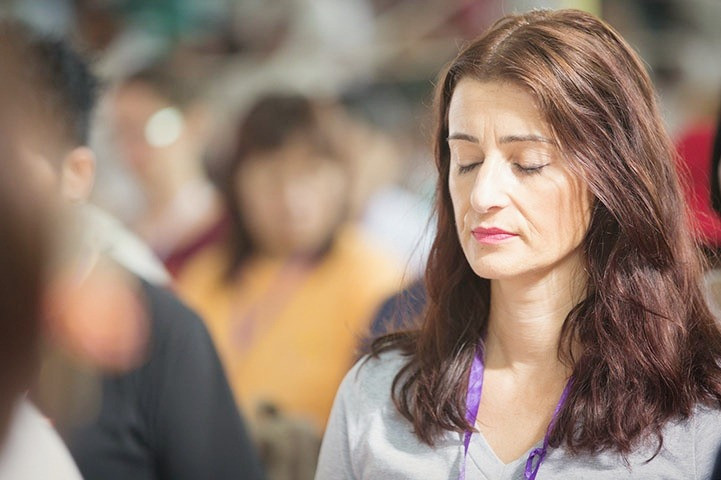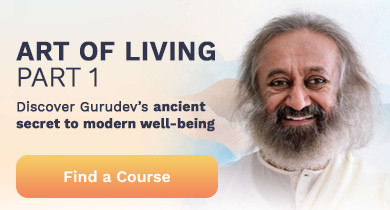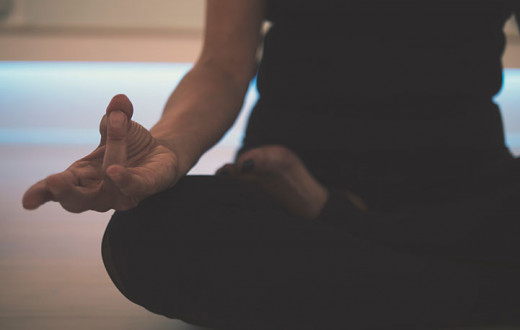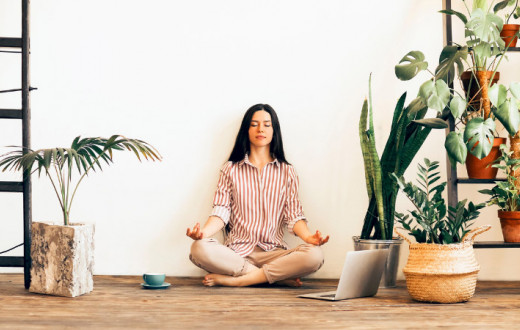
Stress is unavoidable, both at work and in your personal life. Perhaps you’re working for a promotion, or you’re buying your first house, or dealing with a difficult boss or a demanding family life. While all of these life challenges are exciting, they also create much stress and restlessness. One of the most effective and powerful ways to relieve the pressures of life is through a few minutes of meditation every day. Meditation gives the mind a deep rest and relaxation, and the deeper we can rest, the more lively, energetic, and proactive we become. In this article, I am exploring some popular types of meditation from my own experience, I hope this helps you to pick the best one for you.
What is meditation?
Meditation is the process of achieving a mind free of agitation. Our mind wanders between past and future. It’s when you are in the present moment, there is no hesitation about or anticipation of what is coming next, and the mind returns to its natural state of peace and joy.
Meditation is the delicate and effortless art of doing nothing. Beyond all the chatter and noise in our mind, there is a silent, peaceful, blissful, beautiful space that exists in all of us, a place that is intact and unbroken. Turning our attention to this silent chamber brings relief both from the intrusiveness of outer affairs and from the incessant voices chattering within us. This silence cleanses the mind, giving it a much-needed rest, and making room for better perceptions and new ways of looking at life and its challenges.
Over the years, the word meditation is used loosely for many different kinds of activities such as mindfulness, concentration, visualization, affirmation, contemplation, relaxation, awareness, and self-hypnosis. And this list can go even longer! All these useful activities are overlapping to some extent and may seem similar but these are not correct synonym words for meditation. Some of these could be the outcome of good meditation practice.
What are the benefits of meditation?
The benefits of meditation are manifold. It is an essential practice of mental hygiene that improves our quality of life. Many recent research studies suggest that meditation is not just a temporary technique for stress relief, but that it also changes your brain and also improves physical well-being as well as emotional health. Natural results of meditating regularly include a calm and balanced state of mind, improved focus, increased awareness, good concentration, clarity of perception, improvement in communication and creativity, the blossoming of new skills and talents, peaceful and pleasant vibes, an unshakeable inner strength, increased immunity, and healing power, and the ability to connect to an inner source of energy and infinite joy.
Studies also indicate that meditation may help manage symptoms of conditions like high blood pressure, heart disease, asthma, irritable bowel syndrome, sleep problems, tension headaches, chronic pain, depression, anxiety, and even cancer.
In today's world, where stress catches on faster than the eye can see or the mind can perceive, meditation is no longer just a luxury, but a necessity. To be unconditionally happy and at peace and to be in the present moment, we need to tap into the power of meditation.
What are different types of meditation techniques?
Spiritual masters and now mental health experts have come up with several types, techniques, and forms of meditation for you to explore. Some have their roots in the Buddhist traditions, some in the yoga tradition from India, some in Christianity, or the Zen tradition. In recent times, many meditation teachers, practitioners, and modern research have attempted to classify all these wonderful activities as some type of meditation like closed or focused attention, open monitoring, and automatic self-transcending (mantra meditation), etc. All these are different approaches to meditation and offer their own set of benefits.
Valuable lesson
But for a beginner, all these different types of meditation can be quite confusing and can disturb your inner equilibrium if you try them on your own. So it is very important to learn from a qualified teacher who can help you guide you on your journey to inner bliss. Though you have plenty of varieties to choose from, it is good to stick to whatever works for you and go deeply into it. The important thing is making time every day to practice: sit quietly, eyes closed, breathe, let go, and connect with the Self.
The best meditation techniques for beginners
As a yoga and meditation teacher, I’m often asked what the best type and technique of meditation is, the one that is most effective and works for all kinds of people. Some people also want to know if meditation requires a religious connection or a belief in God.
To me, meditation essentially is a spiritual practice, though some forms of meditation could be attached to some religions.
From my experience of meditating for more than two decades, I have realized that to build a successful meditation routine, meditation needs to be simple, comfortable, and have results that make you want to keep practicing every day. I also learned a few secrets of meditation that made my practice so much fun and something that I look forward to.
I did explore several types of meditation like Vipassana (which involves focusing on the breath), mindfulness (involves paying attention to your physical sensations, thoughts, and emotions without judgment), body scan, chakra meditation, etc in the beginning before I arrived upon my meditation technique for personal everyday practice about a decade ago. These are SKY Breath Meditation and Sahaj Samadhi meditation. The day I learned these techniques, I hit home! There was no turning back then to any other techniques. And that is what helped me establish my practice! Let me briefly explain to you what makes these techniques so powerful and transformative.
SKY Breath Meditation— an easy breathing meditation
SKY is a type of meditation based on a powerful rhythmic breathing technique being practiced by over 450 million worldwide. SKY involves the use of the most potent tool i.e. your own breath, that can always help you in quieting your mind. It uses specific cyclical, rhythmic patterns of breath to bring the mind and body into a relaxed yet wakeful state. Whatever your state of mind is, SKY breathing will help you calm down.
Cognized by Gurudev Sri Sri Ravi Shankar, a world-renowned meditation master, and expert, the practice is concluded with an effortless meditative state where practitioners report clarity of mind, prolonged moments of thoughtlessness, slower and steadier heart rate, and calmness of being.
SKY Breath Meditation, an evidence-based technique, with over 100+ independent studies, has helped its practitioners experience better rest and enhanced deep sleep, significantly decreased depression and anxiety, increase in well-being both physically and mentally, reduced stress hormones, measurable impact on quality of life.
In a 2019 research at Yale University, researchers conducted the study, which tested three skill-building training programs (SKY Campus, Emotional Intelligence, and Mindfulness-Based Stress Reduction) on 135 undergraduate subjects for eight weeks (30 hours total), and measured results against those of a non-intervention control group.
They found that a training program called SKY Campus Happiness which relies on SKY Breath Meditation, yoga postures, social connection, and service activities, was most beneficial. Following the SKY sessions, students reported improvements in six areas of well-being: depression, stress, mental health, mindfulness, positive affect, and social connectedness. The other two programs showed improvement in just one area.
Sahaj Samadhi meditation—effortless mantra meditation
“Sahaj” means effortless, and “Samadhi” means a state of equanimity or bliss. As the name suggests, this is an easy, enjoyable, and effective meditation technique that involves the use of a personalized mantra. This is also founded by Gurudev Sri Sri Ravi Shankar who says, “In Samadhi, that very deep state of meditation, you are given energy and long-lasting bliss. It carries you higher and higher until your very presence radiates love.”
This mantra meditation is a rare combination of simplicity and depth. Each practitioner is given his or her mantra, or sound vibration, and is taught how to use it to go deep into the meditation to experience profound inner peace and bliss. The practitioner learns to let go without making any efforts to stop the chattering mind and comes to a deep state of restful awareness. Though it involves no effort, this ancient and rare type of meditation brings a profound effect. Both your mind and body relax into a state of intense restfulness in which deeply-rooted stresses dissolve, and the experience of one’s infinite potential for peace, joy, and creativity unfolds.
Award-winning research on this mantra meditation
Research on the effects of Sahaj Samadhi Meditation on cardiovascular health, nervous system, and clinical depression received the award for best research at World Psychiatry Association in 2017. The research paper cited that adding this technique to traditional treatments for patients of late-life depression was five times more effective than traditional treatments. And, in contrast to traditional treatments, this was free and had zero side effects or withdrawal symptoms, unlike medications.
Sahaj is technically called an ASTM, which is an automatic self-transcending meditation practice that does not require any external control or direction. The effects of Sahaj Samadhi meditation have been striking in the treatment of clinical depression symptoms. Where the remission rate for traditional treatments stood at 10%, the remission rate for patients who added Sahaj Samadhi meditation practice to traditional treatments was as high as 53%.
Sahaj Samadhi is also known to improve heart health. Studies showed a Sahaj practice significantly improved the high-frequency heart-rate variability, a key indicator of heart health in the long term and an overall indicator for longevity.
How to learn the Sahaj Samadhi Mantra Meditation
The Art of Living Foundation offers this workshop year-round and for a limited time virtually too at a 50% discount. Find out more here.
In just 6-7 hours of investment spent over a weekend, many practitioners have been able to adopt this as a long-term daily personal meditation technique. It is recommended to do this 20 minutes twice a day. You will also find support groups and trained instructors worldwide.
Guided meditation: a stepping stone
If you want to get a glimpse of meditation on your own, you may try a guided meditation. My favorite one is Blossoming In Your Smile. Get settled with your eyes closed and try this meditation now.
Some meditation tips for beginners
When you are first starting your meditation journey, you may find that you get distracted by many thoughts, the process of quieting the mind is very difficult and may conclude that achieving a thoughtless state is impossible. But it is not. It may take some time to reach that point, but that’s one reason it is called “practice”. Choosing the right meditation technique which is both easy and effective is so useful to break the patterns of the mind.
Meditation, the 7th limb of the eightfold path of yoga, is a very ancient tool that has been practiced for thousands of years across various cultures for different purposes like stress relief, health benefits, spiritual progress to enlightenment. If you want to go to the deepest realms of meditation, it is highly recommended to learn it from a lineage-based meditation teacher.
In the words of Sri Sri Ravi Shankar, “Every day you brush, that is dental hygiene. Similarly, every day you meditate, that is mental hygiene.”
What he says is true: meditating daily reaps real benefits. Before meditating, start with some warm-ups, yoga postures, and breathwork. Our breath and emotions are very strongly connected, and slow, gentle, effortless breathing can help calm the mind by reducing the feelings of stress and anxiety. If you want to get started with guided meditation, I recommend you use this meditation app called Journey App (download for free!). It has a wonderful collection of guided meditations that can quickly relax your mind and bring you to the present moment.
Don't give up
Several other meditation practices include Vipassana meditation, Transcendental meditation, mindfulness meditation, loving-kindness meditation, metta meditation, chakra meditation, yoga meditation, guided imagery, unguided meditation, deep breathing, breath awareness meditation, compassion meditation, body scanning meditation, and walking meditation, qigong, and many more. Out of these, I have tried Vipassana meditation, Transcendental meditation, mindfulness meditation, yoga meditation, chakra meditation but I find none as effective, easy, simple, and profound as SKY and Sahaj.
If you are new to meditation, I suggest trying SKY and Sahaj before you explore all other forms of meditation techniques. You will experience some tangible shift right from the very first sitting. And just in a couple of months of consistent practice, you will become proficient with it. If you already have dipped your toes into meditation and tried some techniques that are not resonating with you, don’t give up. Try SKY or Sahaj.
Join the SKY intro session for free
If you would like to know more about what you will learn in SKY Breath Meditation, you can join Beyond Breath, a free online introductory session with a live instructor today who will also be available to answer all your questions.
Have you used any form of meditation? Or have you explored different types of meditation? Which is the best type of meditation technique for you? Do share with us at blog@us.artofliving.org
Enjoy your meditation practice and journey to greater physical, mental, emotional, and spiritual well-being.






























